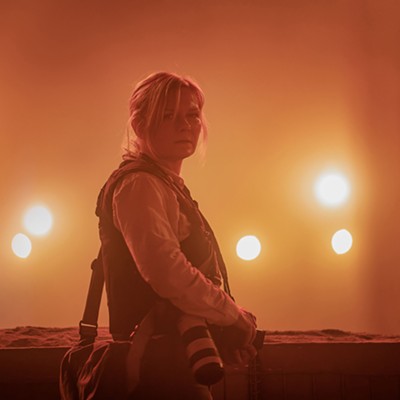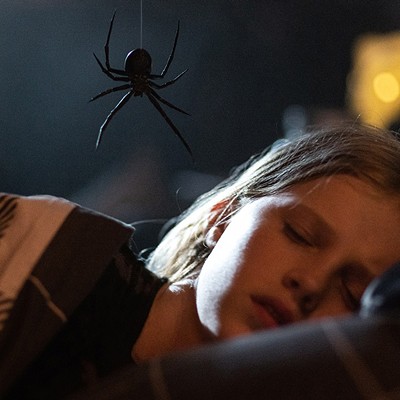Hollywood has been trying to get to the heart of F. Scott Fitzgerald’s novel about the American Dream gone wrong almost since its publication in 1925. The first version, long lost, came out in 1926. Three more followed, in 1949, 1974 and 2000. The best known of them, the ’74 version, which featured a too-old-looking Robert Redford as Gatsby and a miscast Mia Farrow (a last-minute replacement for Ali MacGraw), stayed fairly loyal to the book’s story but didn’t come close to capturing its spirit.
Now we’ve got one that succeeds on both of those counts, but is still going to have some trouble among the Fitzgerald purists. Directed and co-written by Baz Luhrmann, who has never been afraid to go over the top in such films as Romeo + Juliet and Moulin Rouge!, this Gatsby makes sure to cover the basics — its first image is the book’s iconic green light — but maintains the freedom to more fully explain some of Fitzgerald’s ideas.
Nitpickers will have a field day thanks to the film’s new framework of protagonist and first-person narrator Nick Carraway telling the story in flashback from a psychiatrist’s office, where Nick has been diagnosed as “morbidly alcoholic.” Naysayers won’t like the fact that antagonist and swaggering bad guy Tom Buchanan actually says, “I told you never to call me here,” on the phone, to his mistress.
Of course, little things like these won’t matter to those who haven’t read the book — you have read it, yes? If not, do it now! Go to the library or the used book shop. Read the damn thing. It’ll take you two hours. It really is one of the greats, and it’ll make you appreciate what a fine adaptation this film is.
And you’ll realize that the little changes work beautifully within the context of the film. One of the best add-ons is an early sequence showing Gatsby to be a reckless driver. I’ve made up a term for that: It’s — with a nod to Hitchcock — a foreshadowing MacGuffin.
Leave the subtleties and the ironies of The Great Gatsby to the printed page. There’s nothing subtle in this screen version, and there’s nothing wrong with that approach. Gatsby (Leo DiCaprio owns the role from the moment you first see his dazzling smile) is a mysterious, extremely wealthy fellow with an impossible agenda that involves recreating his own happier past. Also — not quite as — wealthy are Tom and Daisy Buchanan (Joel Edgerton, Carey Mulligan), a couple who couldn’t be less happy together. Nick Carraway (Tobey Maguire) is the disillusioned fellow, the only truly innocent person in the story, who comes East after WWI to find his fortune or maybe just figure out his life and falls into the midst of this, in Fitzgerald’s words, “rotten crowd.”
People gather in gorgeous settings, then lie to each other, cheat on each other. Cases of mistaken identity lead to tragedy; dark secrets haunt others; words are blurted that aren’t meant to be said aloud. It’s into this visually beautiful but emotionally bankrupt world that Luhrmann sets up his swooping 3D cameras and fast editing style. There is, heaven forbid, a tad of hip-hop on the soundtrack (composed by Luhrmann regular Craig Armstrong, not, as reported, by Jay-Z), but it actually works when it’s part of the film’s frenzied music-drenched party sequences.
This is a love story about lonely and selfish people, each of whom, with the exception of Nick, believes that he or she is entitled to anything they desire. At the center of it all is Gatsby’s impossible longing for the unattainable Daisy. It’s a tale that’s dazzlingly entertaining and profoundly sad.
















